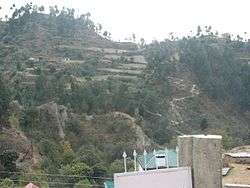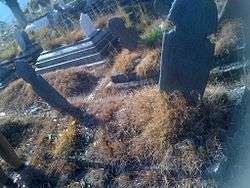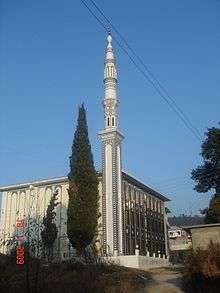Maira Amjad Ali
| Maira Amjad Ali | |
|---|---|
| Union Council and Town | |
 | |
| Coordinates: 34°21′11″N 73°18′15″E / 34.35306°N 73.30417°E | |
| Country | Pakistan |
| Region | Khyber-Pakhtunkhwa |
| District | Mansehra District |
| Elevation | 1,330 m (4,360 ft) |
| Population | |
| • Total | Appx. 3,000 |
| Time zone | PST (UTC+5) |
| Area code(s) | 0997 |
Maira Amjad Ali is a village in the Mansehra district of Khyber Pakhtunkhwa, Pakistan. It is part of Pairan union council of tehsil Mansehra. The village has a population of approximately 3,000 people. It is located 10 kilometres from Attarshisha and 6 kilometres from Sandesar, from where its road diverges from the Kaghan Highway (N15).

History
The village's name is derived from the name of Jumd Ali Awan latrer becane Amjad Ali the clan of settlers who made this their home before Mughal emperors.
According to legend, Qutb Shah (Persian: قطب شاه) was a ruler of Herat and a general in the army of Sultan Mahmud of Ghazni.
Historical sources attest that the Khorasan and Herat were under the rule of King Nuh III of Samanids,[1] the seventh of the Samanid line—at the time of Sebük Tigin and his older son, Sultan Mahmud Ghaznavi.
The governor of Herāt was a noble by the name of 'Faik',[2] who governed on behalf of King Nuh III.[citation needed] Faik was a powerful, but insubordinate governor of Nuh III;[citation needed] and had been punished by Nuh III. Faik made overtures to Bogra Khan and Ughar Khan of Khorasan.[citation needed] Bogra Khan answered Faik's call, came to Herāt and became its master.[1] This person, Faik, had in fact nothing to do with any fictitious 'Qutb Shah'. No real proof exists anywhere of the actual existence of any such individual.
In 994, Nuh III invited Alp Tigin to come to his aid. Alp Tigin, along with Mahmud of Ghazni, defeated Faik and annexed Herāt, Nishapur and Tous.
It is claimed in legend and folklore that Qutub Shah and nine of his sons accompanied and assisted Sultan Mahmud Ghazni in his early eleventh-century conquests; of what today forms parts of Afghanistan, Iran, Pakistan and Northern India, who, according to tribal traditions, settled primarily in the Salt Range.
Geography
The village is located on a plateau wedged between the Chowki mountains on the northeast side and the Sarjool top on its southwest. A small stream runs through the base of these hills toward the nearby hamlet of Samiyan. The average height of the village is 4,304 feet (1311 metres) above sea level.[1] The subsoil is mainly mixed rocky clay. It is 17 kilometres from the nearby city of Mansehra and 29 kilometres from Balakot.
Demography
The village's population is approximately 3,000, with the predominant religion being Islam. Ethnically, the people identify themselves with various tribes including the Awans, Gujjars, Kashmiris, Rajputs and Swatis. Suleman Khel sulemani
Governance
The village is part of the Pairan Union council of District Mansehra.
Educational facilities
The village is served by two separate primary and middle schools for girls and boys. There are two privately run schools, and it also has an NGO funded school running under TDF International, constructed after the devastating 2005 earthquake.

Religious sites
The village has a large, triple storied, newly constructed Jamia mosque called the "Jamia Masjid Siddique-e-Akbar (R.A)" with a spacious hall and a tall minaret, visible from quite some distance. There is a traditional religious seminary in the mosque. The old mosque has also been converted into a separate seminary for girls.
Commercial facilities
The traditional parking lot (adda) is surrounded by 15 to 20 shops which provide basic amenities. It is also served by a branch of the state-run utility stores. Most of the items of daily use are brought from the nearby city of Mansehra to which it is connected by road.There is also a (khan market) of (Sajjad Khan) in (adda)of the village
References
- ↑ "Maira Jamād Ali". Chinci World Atlas. Retrieved April 21, 2012. External link in
|publisher=(help)
External links
- Mapcarta entry for Maira Jamad Ali
- Map of Maira Amjad Ali at Worldplaces.net
- "Audience Poll June 7 – 20, 2006". Pakistan Emergency Information Project. Retrieved April 21, 2012. External link in
|publisher=(help)
| Wikimedia Commons has media related to Maira Amjad Ali. |